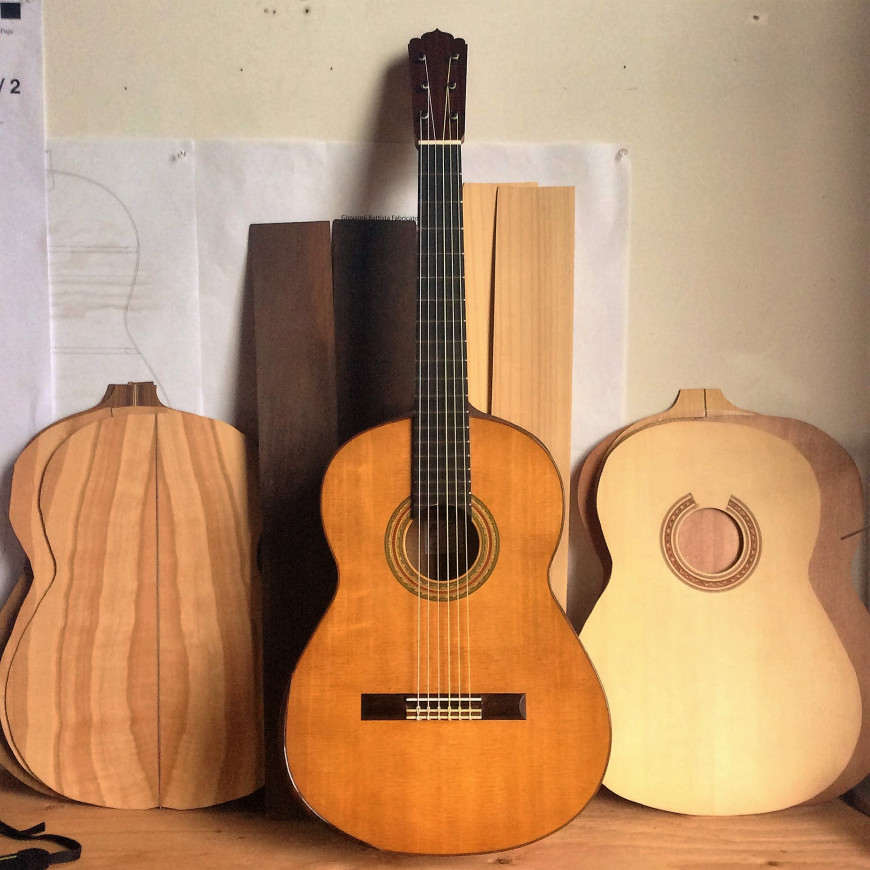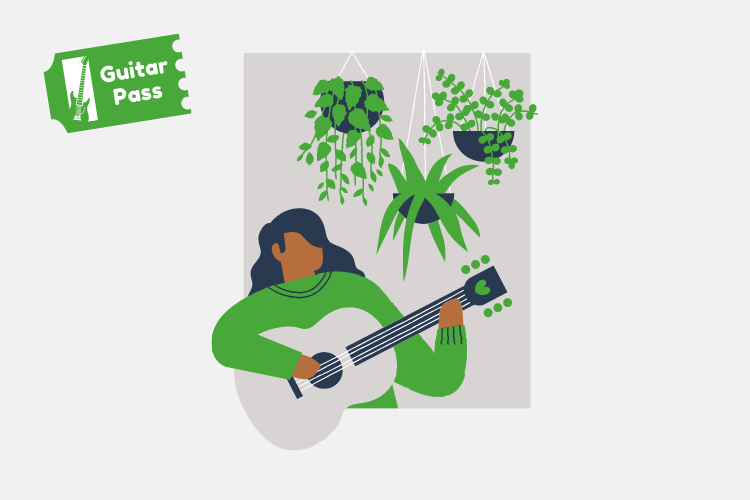Build Your Own Classical Guitar Warm-Up, Part 1: Slurs

Spending ten to fifteen percent of your practice time on a few carefully selected technical studies will work wonders for your playing. Studies break down playing into smaller components and allow you to concentrate on one mechanism at a time. When that mechanism comes up in a song, it will be easier to grasp and make clean without a lot of fuss. Also, warming up with your studies helps you play more comfortably and avoid strains.
| Learn to play flamenco with Leah this fall! Course starts in October. Sign up now. |
If you don't already have a routine of technical studies, this series is a great place to start. I will address three fundamental guitar techniques: slurs (also called hammer-ons and pull-offs), scales, and arpeggios. I will include examples at a variety of levels, so choose the ones that best suit your ability.
Slurs – also called ligados, hammer-ons, and pull-offs – make a string vibrate using only the left hand. Improving your slurs won't just help you when you encounter them in a song – it will also improve your left hand control and precision. Another advantage of slurs is that they can help you play fast passages cleanly. A few well-placed slurs in a scale passage can help you to avoid awkward string crossings and to play faster with less effort.
When you play an ascending slur (hammer-on), your left hand finger strikes the string very quickly. It is the speed of the finger that makes the string sound. You don't need a lot of strength, nor should you ever need to move your finger very far from the fretboard (one inch maximum). Speed and precision are the keys.
When you play a descending slur (pull-off), you begin with two fingers on the same string – for example, finger two on fret two, and finger one on fret one. The right hand plays the string and fret two sounds. Then finger two pulls down on the string towards the string below it. The instant finger two slides off the string, the string will sound at the pitch of fret one, where finger one stays without moving. Pulling down towards the string below (or towards the floor if you're on string one) is the key to descending slurs.
In both ascending and descending slurs, try to keep the left hand free of excess tension, especially in the fingers you are not using to play. For many of us, the left hand pinky will naturally move alongside the third finger, even though it's not playing any strings. That's okay! Better to let it move than to be using your energy and concentration to keep it still.
Simple ascending and descending slurs (beginning)
If you are new to slurs, start with this exercise. The pattern is simple, so memorize it quickly and put all your concentration into moving your left hand as described above.
[lfassetembed]5319[/lfassetembed]
Scales (beginning-intermediate)
You can add slurs to just about any scale to make your own study. These two examples cover most possible finger combinations.
[lfassetembed]5320[/lfassetembed]
Compound slurs (beginning-intermediate)
Compound slurs combine ascending and descending slurs. If you can already play simple slurs easily, the following exercise will help you develop your ascending and descending slurs in one concise study.
[lfassetembed]5321[/lfassetembed]
Excerpt from Slur Study (intermediate)
Slur Study was written by 19th century guitarist and pedagogue Mauro Giuliani. This is just the beginning – if you like it, learn the whole piece!
[lfassetembed]5322[/lfassetembed]
Excerpt from Canarios (intermediate)
Using examples from actual repertoire is a fun way to improve any technique. Canarios is a Spanish dance from the 17th century by composer Gaspar Sanz. Once you're comfortable you can take it at a much faster tempo than the recording.
[lfassetembed]5323[/lfassetembed]
Related:
- Build Your Own Classical Guitar Warm-Up, Part 2: Arpeggios
- Build Your Own Classical Guitar Warm-Up, Part 3: Scales
Find more Guitar Classes and Tutorials
Make real progress in live group guitar classes with great teachers in real time with the Guitar Pass.

Check out the guitar class pass options to see how it'd work for you >>




